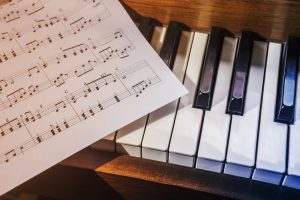Table of Contents
Beethoven – Symphony No. 5 (1st movement) PIANO SOLO arr. sheet music, Noten, partitura, partition.
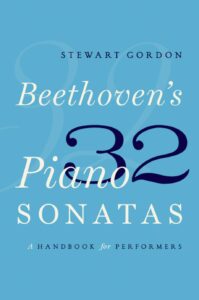
Best Sheet Music download from our Library.
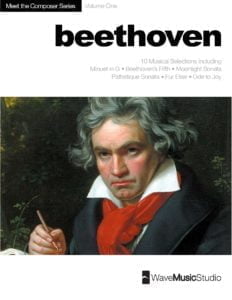
Please, subscribe to our Library.
If you are already a subscriber, please, check our NEW SCORES’ page every month for new sheet music. THANK YOU!
How did Beethoven’s Fifth Symphony become one of the most famous pieces of classical music known today? We explore the history of the monumental ‘symphony of destiny’.
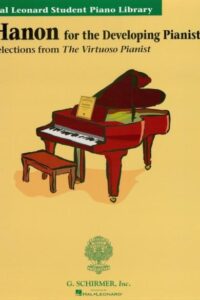
Pick someone at random and ask them to try humming a famous piece of classical music, and they might say “da, da, da, duuum… da, da, da, duuum…”
The opening of Beethoven’s Symphony No. 5.
That classical tune has an equivalence of ‘household name’ status for many people, whether they are classical music experts or a more casual listener who knows it by osmosis. Those opening syncopated chords are iconic.
But how did the beginning of Beethoven’s Fifth Symphony become one of the most famous moments in classical music? And how is it that the symphony is still so well known?
Why is Beethoven’s Symphony No. 5 so famous?
Beethoven’s Fifth Symphony was destined for greatness. Not only was it one of the first symphonies to require trombones in the brass section, and the first to reintroduce a theme from one movement to a later one, but it also heralded a new depth of emotion and evocation of wonder. -Inspirational journey in modern symphonic writing.
The work premiered in Vienna on December 22, 1808, and it did not take long for it to become a standard against which the symphonies of other great composers were compared.
Written in C minor, the work spontaneously jumps from moments of darkness to moments of light, from its opening, surprising and astonished us all with its beauty and scale.
“Many claim that every minor piece must end in minor,” Beethoven later wrote of his own symphony. “On the contrary, I find that… the eldest has a glorious effect. “Joy follows sadness, the sun follows the rain.”
It was revolutionary.
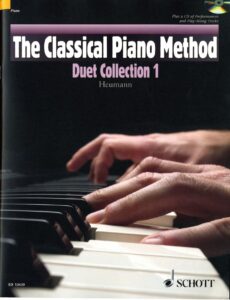
In addition to the quality and emotional resonance of the music, there is another reason why the symphony became so well known. It all comes down to the positive reception of the work at the time of its publication. History has recorded that the premiere unfolded with relatively little fanfare, especially in retrospect, but one writer would, after a few months, push the revolutionary work back into the minds of the establishment when he wrote in Allgemeine musikalische Zeitung:
“Bright rays pierce the deep night of this realm, and we are aware of immense shadows rising and falling, approaching us and annihilating us, but not the pain of endless longing, in which all pleasure that has arisen in sounds of The celebration sinks and sinks, and only in this pain, the love, the hope, the joy (which consumes itself but is not destroyed) that wants to burst out of our chest with a full harmony of all the passions, we continue! living like enchanted visionaries! ‘
The author of this incredible visceral description was ETA Hoffmann, the visual artist (so apt to paint a beautiful picture from this music) and who captured very well the existential experience of listening to the symphony.
It would be hard to stay away after reading a review like that. Apparently so: the legend of the work spread and the public remains excited by the journey that the Quinta undertakes to this day.
Used in TV, cinema, advertising… and disco!
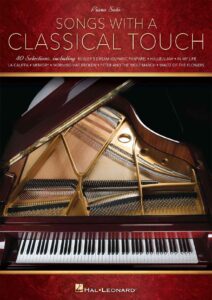
The symphony’s influence would extend far beyond the concert hall and would have a much longer lifespan than the final years of the 19th century.
During World War II, the Allied powers of Great Britain, the United States and Russia would use the opening of the symphony to signal a victory on their side during the war, and the ‘short, short, short, long’ rhythm of the first four notes echoed the letter ‘V’ in Morse code.
The symphony has also appeared in different musical genres, including disco music in the 1970s, in Walter Murphy’s A Fifth of Beethoven, which also appeared on the soundtrack of the film Saturday Night Fever, which became a best-selling album. .
Beethoven’s Fifth has also appeared in television, film, and on-screen commercials, including the hit children’s film Beethoven (and the seven films in the franchise that followed), which chronicles the adventures of a giant Saint Bernard dog who, clearly exhibiting excellent taste. , barks to the tune of Beethoven’s Fifth Symphony.
In 2013, Google borrowed an improved version of the symphony’s opening to promote its Internet browser, Google Chrome.
There are many more examples.
And there’s a reason for all this exposure and inclusion in mainstream culture far beyond the 1808 Vienna premiere: the music itself, all of it derived from that iconic four-note opening. Syncopated, catchy, shocking; It’s so distinctive.
What is the most famous part of the Fifth Symphony?
The first four notes of Beethoven’s Symphony No. 5 are iconic, familiar to classical music devotees and casual listeners alike. The symphony’s ominous opening is immediately “hummable,” on the tip of your tongue, ready to demonstrate what “classical music” is.
“Da, da, da duuum…”
After the suspense and shock, the repetition and then development of this four-note motif launches us on a wild ride between the edge of joy and the deepest despair as the symphony hurtles along at full speed.
Light, then heavy; at once dark, but then suddenly joyful: it’s a tremendously emotional place to start, and from the start, the symphony takes us on an indescribable journey through an auditory experience that seems to question what the very essence of being human could mean.
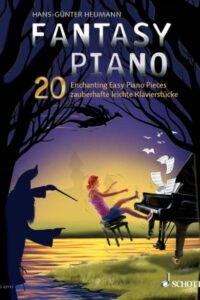
Powerful things.
What is the meaning of Beethoven’s Fifth Symphony?
Beethoven’s Fifth is often known as the “destiny” symphony, named after the composer’s own description of the four opening notes as “destiny knocking at the door.”
It is an instantly evocative and deeply meaningful title that, captured in just four words in the same way that Beethoven’s symphony can be evoked in just its first four notes, succinctly describes what awaits us.
How Beethoven fulfills.
Ludwig van Beethoven (short bio)
(Bonn, now Germany, 1770 – Vienna, 1827) German composer. Born into a family of Flemish origin, his father, given the evident qualities for music that little Ludwig demonstrated, tried to make him a second Mozart, although with little success.
Beethoven’s true musical vocation did not really begin until 1779, when he came into contact with the organist Christian Gottlob Neefe, who became his teacher. He was, for example, the one who introduced him to the study of Johann Sebastian Bach, a musician to whom Beethoven would always profess a deep devotion.
A member of the Bonn court orchestra since 1783, in 1787 Ludwig van Beethoven made his first trip to Vienna with the purpose of receiving Mozart lessons. However, the illness and subsequent death of his mother forced him to return to his hometown a few weeks after his arrival.
In 1792 Beethoven traveled again to the Austrian capital to work with Haydn and Antonio Salieri, and became known as a composer and pianist in a concert that took place in 1795 with great success. His career as a performer was abruptly interrupted as a result of deafness that began to affect him in 1796 and that from 1815 completely deprived him of his hearing ability.
The last years of Beethoven’s life were also marked by loneliness and progressive introspection, despite which he continued his compositional work, and it was even the time in which he created his most impressive and advanced works.
Works of Ludwig van Beethoven
Tradition divides Beethoven’s career into three major creative periods or styles, and although use has turned them into clichés, they are no less useful when it comes to framing his legacy.
The first period covers the compositions written until 1800, characterized by closely following the model established by Mozart and Joseph Haydn and classicism in general, without excessive innovations or personal traits. Works such as the famous Septimino or his first two piano concertos belong to this period.
A second manner or style covers from 1801 to 1814, a period that can be considered mature, with completely original works in which Ludwig van Beethoven displays an absolute mastery of form and expression (the opera Fidelio, his first eight symphonies , his last three piano concertos, the Violin Concerto).
The third stage extends until the musician’s death and is dominated by his most innovative and personal works, misunderstood in their time due to the novelty of their harmonic language and unconventional form; the Symphony No. 9, the Missa solemnis, and the later string quartets and piano sonatas represent the culmination of this period and of Ludwig van Beethoven’s style.
Browse in the Library:
Or browse in the categories menus & download the Library Catalog PDF:
